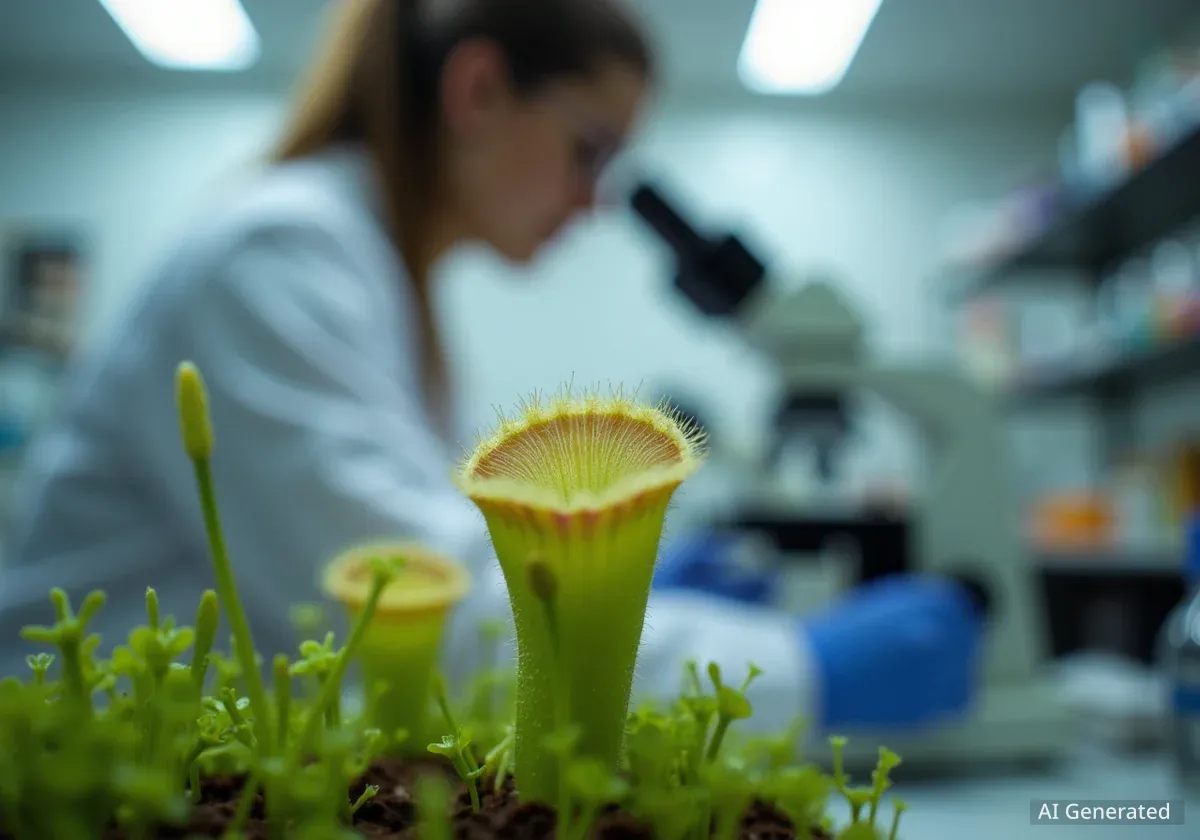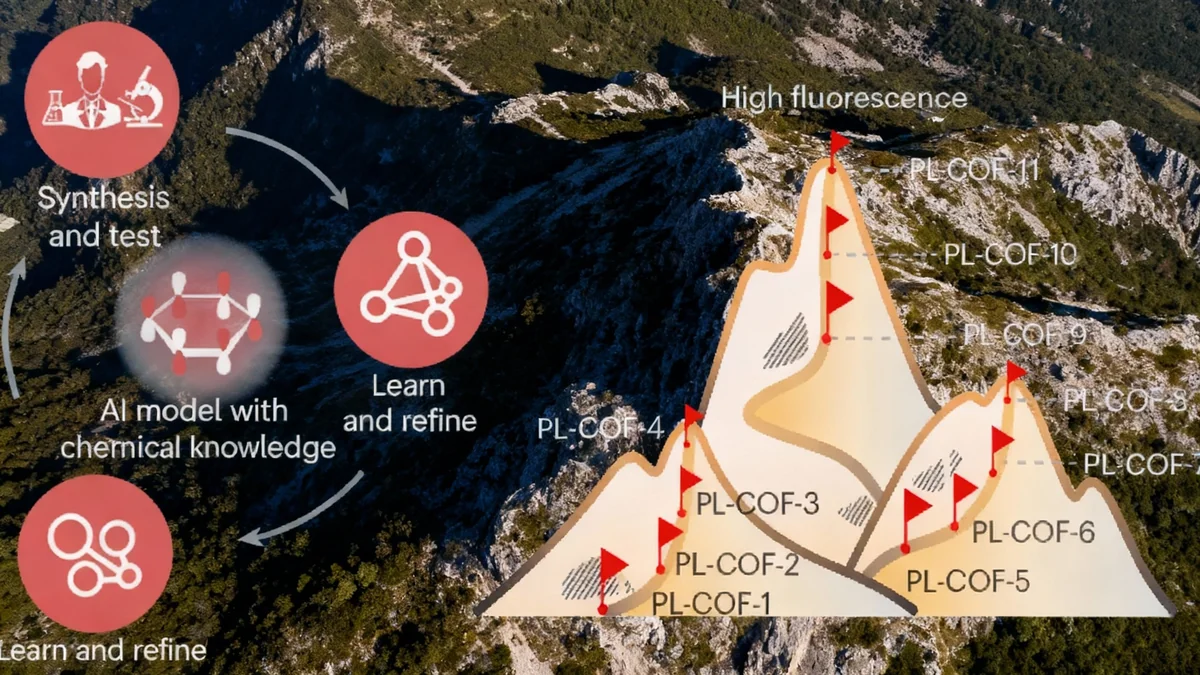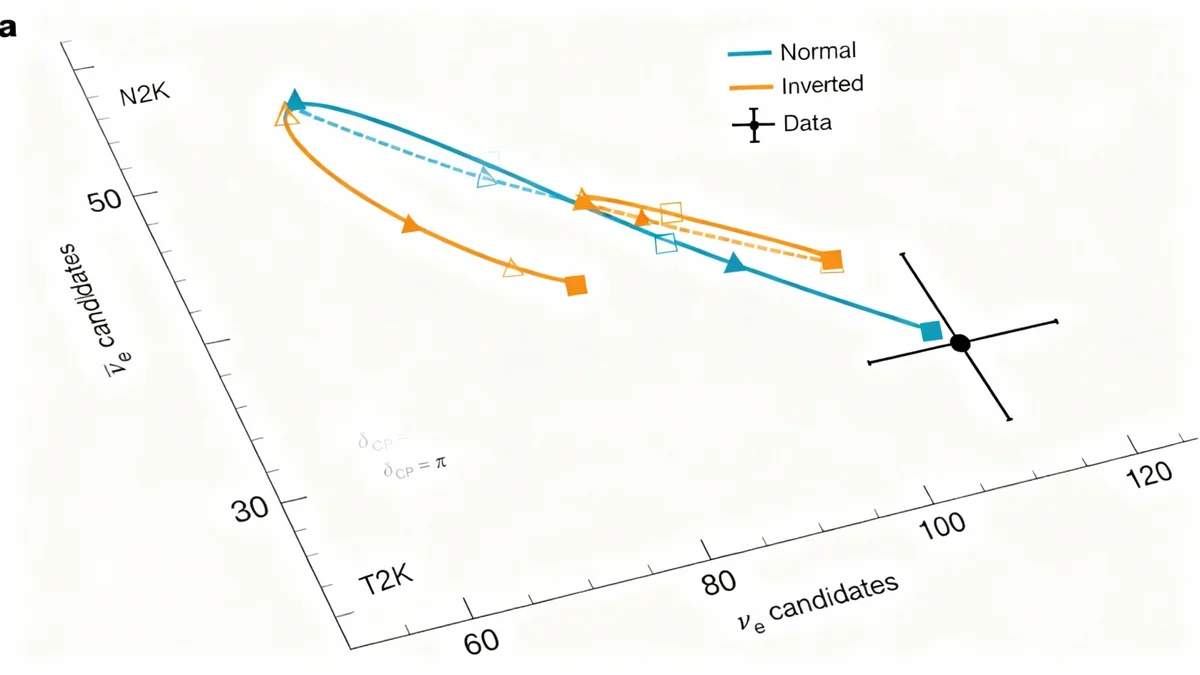Researchers have identified a specific protein that acts as a highly sensitive mechanosensor in the Venus flytrap, explaining how the carnivorous plant detects the delicate footsteps of its prey. A study published in Nature Communications reveals that the protein, DmMSL10, is essential for converting a light touch into the electrical signals that trigger the plant's iconic trap closure.
Key Takeaways
- Scientists identified the protein DmMSL10 as a critical high-sensitivity touch sensor in Venus flytraps.
- The plant uses a two-step electrical signaling system, similar to the sense of touch in animals, to process stimuli.
- Experiments showed that flytraps lacking the DmMSL10 protein were significantly less effective at detecting and capturing ants.
- This discovery clarifies the molecular mechanism that allows the plant to distinguish between prey and non-prey stimuli like raindrops.
A Two-Step System for Sensing Prey
The Venus flytrap's ability to snap shut on unsuspecting insects has long fascinated scientists. New research now details the precise mechanism behind this rapid movement, revealing a sophisticated two-step process that begins in its sensory hairs.
Using advanced imaging and electrophysiological recording techniques, the research team observed how the plant responds to mechanical stimuli. They found that a touch first generates a localized electrical signal known as a receptor potential (RP). This initial signal occurs only in the specific cells that were stimulated at the base of a sensory hair.
If this initial stimulus is strong enough, the RP reaches a critical threshold. This triggers a second, more powerful signal called an action potential (AP). Unlike the localized RP, the AP travels rapidly across the entire leaf blade, preparing the trap for closure. The trap only snaps shut after receiving two of these action potential signals within a short time frame.
How the Trap Works
The Venus flytrap has several small trigger hairs on the inner surface of its lobes. To conserve energy, the plant requires two separate touches to these hairs in quick succession before it closes. This prevents it from reacting to false alarms like falling debris or raindrops. Once triggered, the lobes snap shut in a fraction of a second.
Pinpointing the Molecular Sensor
The central discovery of the study is the role of a protein named DmMSL10. This protein is a type of stretch-activated ion channel, meaning it opens in response to physical stretching or pressure on the cell membrane. Researchers found it is highly concentrated in specialized cells at the base of the sensory hairs, called indented cells.
To confirm its function, the team used CRISPR-Cas9 gene-editing technology to create Venus flytrap mutants that lacked the DmMSL10 protein. When these mutant plants were tested, their response to touch was significantly diminished.
While the mutant plants could still generate small receptor potentials, these signals were often too weak to reach the threshold needed to fire a full action potential. As a result, they were far less sensitive to the light touches that would normally signal the presence of prey.
"Our findings demonstrate that DmMSL10 is crucial for mechanosensing, facilitating AP firing by generating a receptor potential (RP) amplitude," the study authors explained.
Testing the Trap in a Natural Setting
To understand the real-world implications of this discovery, researchers designed a "microecosystem" to observe interactions between the plants and ants, a common prey item. They compared the prey-capture success of normal, wild-type Venus flytraps with the dmmsl10 knockout mutants.
The results were clear. When ants walked across the traps of the wild-type plants, their movements consistently triggered the necessary calcium and electrical signals, leading to successful captures. In contrast, ants often walked freely over the sensory hairs of the mutant plants without triggering a response.
A Significant Drop in Sensitivity
Observations over a three-hour period showed that the probability of a calcium signal occurring when an ant visited a trap was reduced by 18.5% in the dmmsl10 mutant plants compared to their wild-type counterparts. This directly impacted their ability to hunt.
The study showed that while the mutant traps could still close in response to very strong stimulation, they lacked the high sensitivity needed to detect small insects. This confirmed that DmMSL10 acts as the plant's primary sensor for detecting the faint, micro-newton scale forces exerted by its prey.
A System Similar to Animal Nerves
One of the most compelling aspects of the research is the parallel between the Venus flytrap's sensory system and the tactile sense in animals. The concept of a localized receptor potential needing to cross a voltage threshold to trigger a long-range action potential is a fundamental principle of how nerve cells function in animals.
This suggests a case of convergent evolution, where plants and animals have independently developed similar solutions for sensing and responding to their environments.
The Detailed Mechanism of Action
Based on their findings, the researchers proposed a step-by-step model for how the Venus flytrap senses touch:
- A mechanical stimulus, like an insect's leg touching a sensory hair, stretches the membrane of the indented cells.
- This stretching activates the DmMSL10 ion channels, causing them to open and generate a localized receptor potential (RP) and a small calcium signal.
- If the stimulus is strong enough, the RP reaches a threshold, triggering a massive, propagating action potential (AP).
- The AP travels with a long-range calcium signal to the rest of the leaf blade.
- A second, subsequent AP triggers the trap's rapid closure, capturing the prey.
This detailed understanding of the plant's mechanosensing system not only solves a long-standing biological puzzle but also opens new avenues for research into how plants perceive and interact with the physical world.





